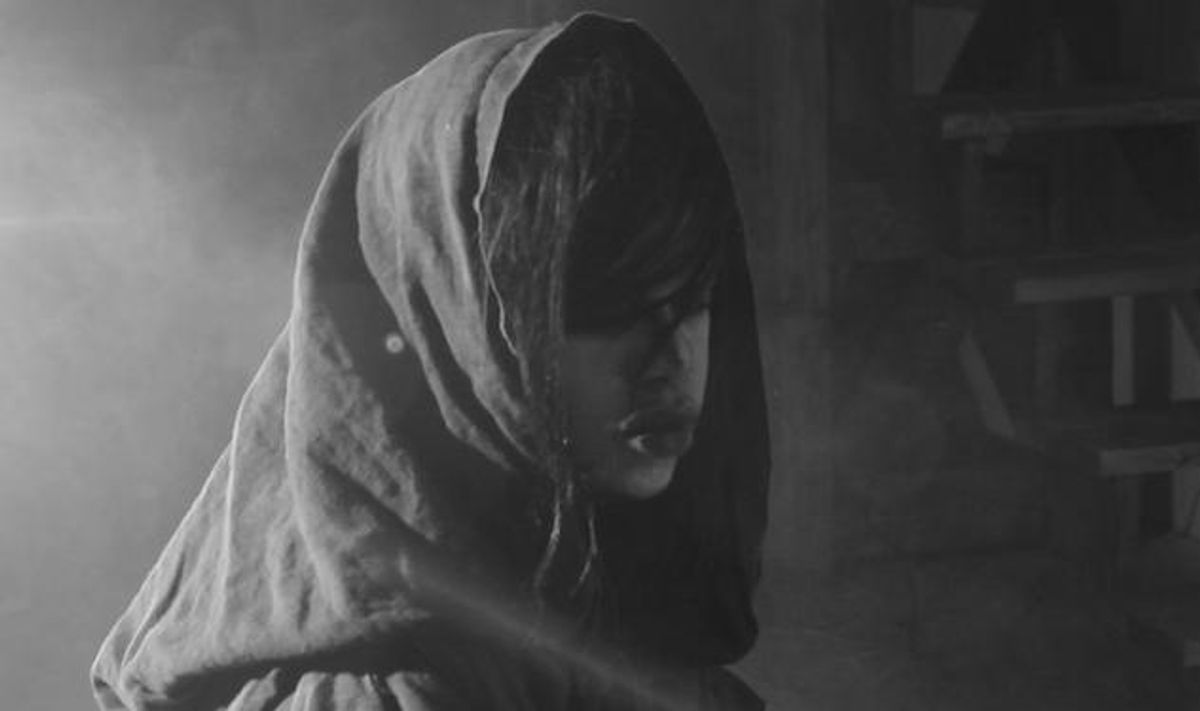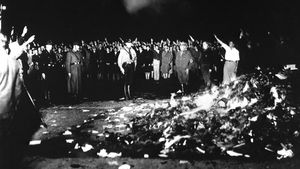A still from 'NEGROGOTHIC: a Manifesto' | Courtesy of M. Lamar
Before starting a conversation with musician and multimedia artist M. Lamar there are a few things you should read up on: doom metal, Robert Mapplethorpe, Frantz Fanon, Plato, Leontyne Price, bell hooks' concept of white-supremacist-capitalist-patriarchy, James Brown, James Baldwin, counter tenors, Cecil Taylor, the early films of Todd Haynes, Carrie Mae Weems, Kara Walker...
This list could go on forever--as could any conversation with Lamar. Thankfully, to enjoy his performances and their freaky bricolage of opera and heavy metal, raw emotion and formal training, flesh and spirit, there's no reading required. You simply have to be willing to go there. "There," in this case, being the deep recesses of Lamar's psyche, where an entire universe of "negro gothic sensibility" is waiting for an audience willing to take the plunge.
"It's always been a total vision that I have," Lamar says of his work. He's an auteur of an artist, determined to write, direct, and star in all of his own endeavors. Perhaps that's one reason why Hilton Als labeled him a "diva" in the pages of the New Yorker (where he also wrote that Lamar is an "up-and-coming" luminary of NYC's downtown performance scene).
This totality of vision is what drove Lamar from Alabama (where he was born and raised), to the San Francisco Art Institute (where he studied painting), to Yale's prestigious studio art MFA program (where he switched over to sculpture), back to San Francisco (this time fronting a series of metal bands), and eventually to the galleries and cabarets of New York City, where his vision is finally blossoming into a series of performances. And a feature-length film. And a gallery show. And a haunting music video wherein naked white boys in a stockade read Hegel while Lamar croons "fuck you" to them in his evocative soprano.
Speculum Orum-M. Lamar from M. Lamar on Vimeo.
And that's not to mention the role he's probably most well known for: Playing the pre-transition scenes of Sophia in the first season of Orange Is the New Black (a part for which he was particularly well suited, given that Laverne Cox--the actress who plays Sophia on OINTB--is Lamar's twin sister).
For the last two years, Lamar's been working on a show called Surveillance Punishment and the Black Psyche, which he performed at NYC's La Mama gallery in January. It explores the story of Willie Francis, a 16-year-old black boy who was executed in Louisiana in 1947. Twice.
How is that possible? "I always say in America we can find a way to kill a black man twice," Lamar laughs, but he's only half joking. A drunken prison guard, he explains, installed the electric chair improperly the first time. Francis had been found guilty of killing a white pharmacist named Andrew Thomas, who was either his employer, his lover, or his abuser, depending on how you assemble the facts and rumors swirling around this nearly century-old crime.
The question of interracial consent and desire in a racist world is at the heart of Surveillance, which shuttles back and forth in time between the true story of Willie Francis, a hypothetical consensual slave/overseer relationship on a plantation in 1847, and the modern day. The film's visuals are as visceral as Lamar's vocals. When talking about his art, Lamar is an intellectual powerhouse, but his work is informed by that thinking--not constrained by it. It is as emotional as it is thoughtful.

A still from 'NEGROGOTHIC: a Manifesto' | Courtesy of M. Lamar
Much of his work focuses on black male sexuality, and white America's pathological fascination with it. "I'm very interested in white men and their preoccupation with certain kinds of stereotypes about black men and black men's genitalia," Lamar tells me. This interest isn't limited to gay men, Lamar points out--just look at all the white guys directing "big black dick" straight porn. In his music, Lamar turns the lens around, and looks at white people looking at black people. In so doing, he makes obvious the distance between the real lives of black men and the narrow ways in which they are portrayed in the mainstream (white) imagination.
Lamar is currently working on turning Surveillance into a feature-length film, which he hopes to complete later this year. Early stills and props from Surveillance (including a "penis guillotine" and a "Mapplethorpe whip"), as well as items from some of Lamar's older pieces, will form the basis of NEGROGOTHIC a Manifesto: The Aesthetic of M Lamar, a visual art show that will run from Sept. 7 through Oct. 12 at New York City's Participant Inc. Gallery. "It's going to be like a retrospective," Lamar says, "but not--because I'm too young."





















































































